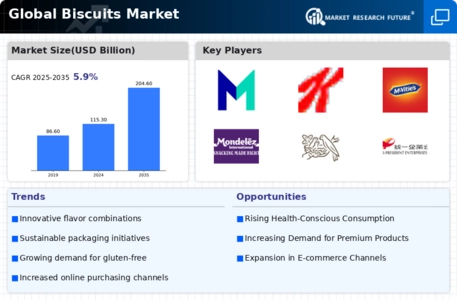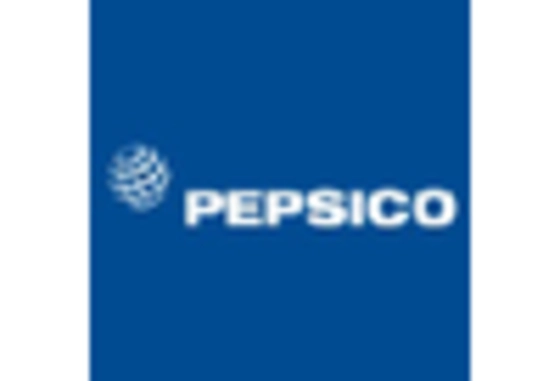Health-Conscious Consumer Trends
The Biscuits Market is increasingly influenced by the rising health consciousness among consumers. As individuals become more aware of the nutritional content of their food, there is a growing demand for biscuits that are low in sugar, high in fiber, and made with natural ingredients. This shift is reflected in market data, which indicates that health-oriented biscuits have seen a significant increase in sales, with a projected growth rate of 5.2% annually. Manufacturers are responding by reformulating existing products and introducing new lines that cater to this demographic. The emphasis on health and wellness is not merely a trend but appears to be a fundamental shift in consumer preferences, thereby reshaping the Biscuits Market landscape.
Innovation in Flavors and Varieties
The Biscuits Market is characterized by a continuous evolution in flavors and product varieties, driven by consumer desire for novelty and unique taste experiences. Manufacturers are increasingly experimenting with exotic flavors, gluten-free options, and innovative textures to attract diverse consumer segments. Recent market data suggests that the introduction of new flavors has led to a 12% increase in sales for certain brands, indicating a strong consumer appetite for variety. This trend not only caters to adventurous eaters but also allows brands to differentiate themselves in a competitive market. As such, innovation in flavors and varieties is likely to remain a key driver in shaping the future of the Biscuits Market.
Sustainability and Ethical Sourcing
Sustainability has emerged as a pivotal driver within the Biscuits Market, as consumers become more concerned about the environmental impact of their food choices. There is a growing preference for biscuits made from ethically sourced ingredients and sustainable packaging. Market Research Future indicates that products labeled as organic or environmentally friendly are witnessing a surge in demand, with sales increasing by approximately 10% over the past year. This trend compels manufacturers to adopt sustainable practices in their production processes and supply chains. As a result, brands that prioritize sustainability are likely to enhance their appeal and loyalty among environmentally conscious consumers, thereby influencing the overall trajectory of the Biscuits Market.
Convenience and On-the-Go Consumption
The fast-paced lifestyle of modern consumers is driving the demand for convenient snack options, significantly impacting the Biscuits Market. Biscuits, being portable and easy to consume, are increasingly favored by busy individuals seeking quick and satisfying snacks. Market analysis suggests that the on-the-go segment is expanding, with sales of single-serve packaging rising by approximately 7% over the past year. This trend is particularly pronounced among younger demographics, who prioritize convenience in their food choices. As a result, manufacturers are innovating packaging solutions and product formats to cater to this need, thereby enhancing their market presence and competitiveness within the Biscuits Market.
E-commerce Growth and Digital Transformation
The Biscuits Market is experiencing a notable transformation due to the rapid growth of e-commerce platforms. With more consumers opting to shop online, biscuit manufacturers are increasingly leveraging digital channels to reach their target audiences. Recent data indicates that online sales of biscuits have surged by 15% in the last year, reflecting a shift in purchasing behavior. This trend is particularly relevant as consumers seek the convenience of home delivery and the ability to compare products easily. Consequently, brands are investing in their online presence and digital marketing strategies to capture this expanding market segment, thereby reshaping the competitive dynamics of the Biscuits Market.

















Leave a Comment